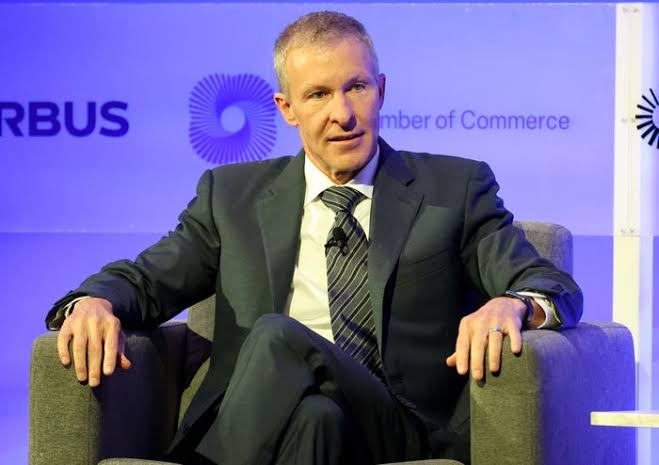
American Airlines Group Inc. is undergoing a significant leadership change as Doug Parker, the company’s long-serving CEO, steps down, and Robert Isom, the current President, assumes the top executive position. This transition marks the end of an era for American Airlines, which has faced numerous challenges and transformations under Parker’s leadership. The change comes at a pivotal time as the airline industry grapples with recovery from the COVID-19 pandemic, ongoing operational challenges, and a shifting competitive landscape.
Doug Parker’s Legacy
Doug Parker’s tenure as CEO of American Airlines began in 2013 after the merger between American Airlines and US Airways, where he had previously served as CEO. This merger was a significant milestone in Parker’s career and in the history of American Airlines, creating the world’s largest airline at the time.
Under Parker’s leadership, American Airlines focused on expanding its global footprint, modernizing its fleet, and enhancing customer service. Parker is credited with steering the airline through some of its most turbulent periods, including financial downturns, labor disputes, and the unprecedented challenges posed by the COVID-19 pandemic.
Parker’s strategic decisions were often met with mixed reviews. His efforts to improve labor relations, invest in technology, and streamline operations have been praised. However, the airline also faced criticism for operational disruptions, customer service issues, and financial setbacks.
One of Parker’s notable achievements was navigating American Airlines through the COVID-19 crisis, which decimated the airline industry. Parker was instrumental in securing government aid and implementing cost-cutting measures that helped stabilize the airline during the pandemic. Despite these efforts, American Airlines, like many of its peers, continues to face challenges related to debt and profitability.
The Transition to Robert Isom
Robert Isom, who has served as President of American Airlines since 2016, is poised to take over as CEO. Isom brings a wealth of experience in the airline industry, with a background in operations, finance, and strategy. Before joining American Airlines, Isom held leadership roles at US Airways and Northwest Airlines.
Isom’s appointment is seen as a move toward continuity, as he has been deeply involved in American Airlines’ strategic initiatives and operations. He has been a key figure in the company’s efforts to enhance operational efficiency, improve customer service, and expand its route network.
Isom has outlined several priorities for American Airlines as he prepares to assume the CEO role. These include strengthening the airline’s financial position, improving operational reliability, and continuing to invest in technology and customer experience. Isom has also emphasized the importance of fostering a positive corporate culture and enhancing employee engagement.
Challenges and Opportunities Ahead
The transition in leadership comes at a time when American Airlines faces a complex set of challenges and opportunities. The airline industry is in a period of recovery following the COVID-19 pandemic, with demand for air travel gradually rebounding. However, the path to recovery is fraught with uncertainty, as airlines navigate fluctuating demand, evolving health protocols, and operational disruptions.
One of the most pressing challenges for American Airlines is managing its substantial debt load. The company took on significant debt during the pandemic to maintain liquidity, and reducing this burden will be a priority for Isom and his team. Additionally, American Airlines must address operational issues that have led to flight delays and cancellations, particularly during peak travel periods.
Despite these challenges, there are also significant opportunities for growth and innovation. American Airlines is investing in sustainability initiatives, such as fleet modernization and the use of sustainable aviation fuels, to reduce its environmental impact. The airline is also exploring new technologies to enhance the customer experience, from improved booking systems to in-flight amenities.
Furthermore, American Airlines is expanding its partnerships with other airlines to strengthen its global network. These alliances enable American Airlines to offer more destinations and seamless travel experiences for its customers, positioning the airline for growth in a competitive market.
Industry Implications
The leadership transition at American Airlines is part of a broader trend of change in the airline industry. As airlines recover from the pandemic, many are reevaluating their leadership structures, strategies, and priorities. This period of transition presents an opportunity for airlines to adapt to new market realities and to innovate in ways that enhance efficiency and customer satisfaction.
American Airlines’ leadership change will be closely watched by industry analysts, investors, and competitors. The success of Isom’s tenure will likely depend on his ability to balance short-term challenges with long-term strategic goals, ensuring that American Airlines remains competitive and resilient in an evolving industry landscape.
Conclusion
The departure of Doug Parker and the appointment of Robert Isom as CEO of American Airlines marks a significant transition for the airline. As Isom steps into his new role, he faces the dual challenge of steering the airline through immediate operational and financial pressures while positioning it for long-term success. The coming months will be critical as Isom implements his vision for American Airlines and navigates the complexities of the post-pandemic aviation landscape.